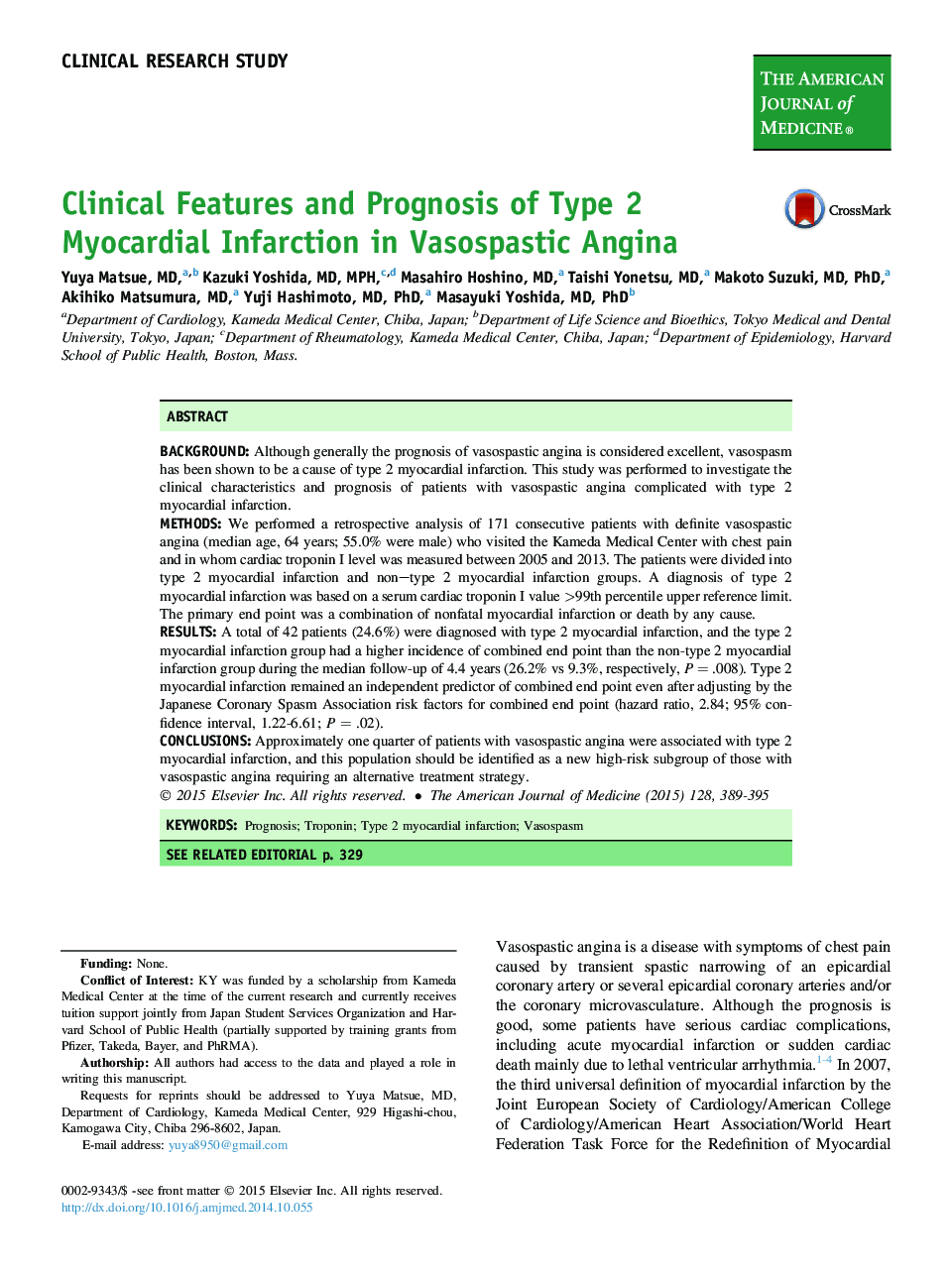| کد مقاله | کد نشریه | سال انتشار | مقاله انگلیسی | نسخه تمام متن |
|---|---|---|---|---|
| 2719254 | 1566125 | 2015 | 7 صفحه PDF | دانلود رایگان |

BackgroundAlthough generally the prognosis of vasospastic angina is considered excellent, vasospasm has been shown to be a cause of type 2 myocardial infarction. This study was performed to investigate the clinical characteristics and prognosis of patients with vasospastic angina complicated with type 2 myocardial infarction.MethodsWe performed a retrospective analysis of 171 consecutive patients with definite vasospastic angina (median age, 64 years; 55.0% were male) who visited the Kameda Medical Center with chest pain and in whom cardiac troponin I level was measured between 2005 and 2013. The patients were divided into type 2 myocardial infarction and non–type 2 myocardial infarction groups. A diagnosis of type 2 myocardial infarction was based on a serum cardiac troponin I value >99th percentile upper reference limit. The primary end point was a combination of nonfatal myocardial infarction or death by any cause.ResultsA total of 42 patients (24.6%) were diagnosed with type 2 myocardial infarction, and the type 2 myocardial infarction group had a higher incidence of combined end point than the non-type 2 myocardial infarction group during the median follow-up of 4.4 years (26.2% vs 9.3%, respectively, P = .008). Type 2 myocardial infarction remained an independent predictor of combined end point even after adjusting by the Japanese Coronary Spasm Association risk factors for combined end point (hazard ratio, 2.84; 95% confidence interval, 1.22-6.61; P = .02).ConclusionsApproximately one quarter of patients with vasospastic angina were associated with type 2 myocardial infarction, and this population should be identified as a new high-risk subgroup of those with vasospastic angina requiring an alternative treatment strategy.
Journal: The American Journal of Medicine - Volume 128, Issue 4, April 2015, Pages 389–395